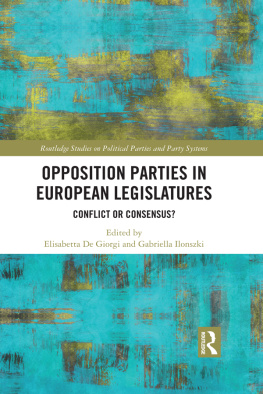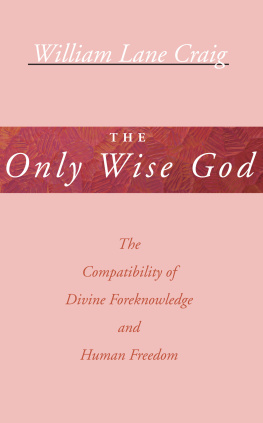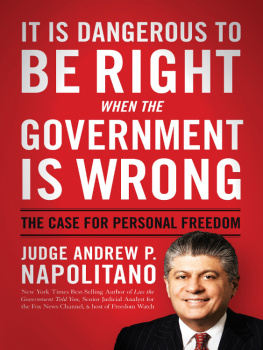Published by State University of New York Press, Albany
2011 State University of New York
All rights reserved
Printed in the United States of America
No part of this book may be used or reproduced in any manner whatsoever without written permission. No part of this book may be stored in a retrieval system or transmitted in any form or by any means including electronic, electrostatic, magnetic tape, mechanical, photocopying, recording, or otherwise without the prior permission in writing of the publisher.
For information, contact State University of New York Press, Albany, NY
www.sunypress.edu
Production by Diane Ganeles
Marketing by Michael Campochiaro
Library of Congress Cataloging-in-Publication Data
Silencing the opposition : how the U.S. government suppressed freedom of
expression during major crises, second edition / edited by Craig R. Smith.
p. cm.
Includes bibliographical references and index.
ISBN 978-1-4384-3519-0 (hardcover : alk. paper)
ISBN 978-1-4384-3520-6 (pbk. : alk. paper)
1. Freedom of speechUnited StatesHistory.2. Political oratoryUnited StatesHistory. I. Smith, Craig R.
JC599.U5S542 2011
323.44'30973dc22 2010027440
10 9 8 7 6 5 4 3 2 1
Preface and Introduction
When all goes well, the free marketplace of ideas functions to provide participants with important information. That model works when freedom of expression has a high priority in the lexicon of the rights we cherish. If the free marketplace is properly protected by the First Amendment, the public should demonstrate its understanding of issues at the polls and in public discourse. That was the dream of the founders when they added the First Amendment to the Constitution on December 15, 1791. For more than two centuries the First Amendment has faced serious challenges that often impair the operation of the free marketplace of ideas. In this study, we examine those crises from the first one during the Alien and Sedition battle in the late 1790s to current challenges occurring after the attack of September 11, 2001.
In the course of this study, we contextualize these crises by reconstructing the background influences, external and internal threats, values, beliefs and attitudes that stimulated the participants. Along the way we examine the interpretation of the First Amendment in various Supreme Court decisions. We analyze the passage of new amendments particularly during the administrations of Abraham Lincoln, Andrew Johnson, and Ulysses S. Grant. We visit the holocaust visited on Native Americans, the labor crisis of the late nineteenth century and the struggle for women to obtain the vote. In those cases, freedom of expression is seen as intimately linked to freedom of assembly and the freedom of exercise of one's religious beliefs. Special attention is also given to the suppression of political expression through content controls placed on the broadcast media and limits placed on campaign contributions.
What the founders had to say about First Amendment rights at each crucial juncture on the road to its incorporation into the Constitution clearly revealed that they believed deeply in an expanded commitment to freedom of expression. Before the American Revolution, the common law of Blackstone focused almost exclusively on preventing prior restraint. By contrast the First Amendment protects citizens from intrusions by their federal government, specifically from the Congress, which was instructed to make no law abridging those rights. The fundamental nature of these rights was further endorsed when they were applied against the states in 1925. That is why the evolution of the First Amendment on its road to becoming our first freedom is central to this study. We hope to demonstrate that while certain First Amendment rights remain unsettled, these crises affected their development and changed their meaning for later generations.
The examination of the debates surrounding the ratification of the Constitution and the Bill of Rights revealed that the founders wished to preserve states' rights at the expense of federal power. The federal government was to be limited to delineated powers spelled out in the Constitution. This study demonstrates the ways in which erosion of that doctrine resulted in the renewed preeminence of the federal government as lawmaker and that to ensure civil liberties the doctrine of states rights had to be compromised.
Freedom of expression has been challenged and often suppressed during the 200-plus years following its incorporation into the Constitution. This volume examines that period by using illustrative case studies of the various forms of governmental suppression in our history because we believe that we can learn as much about our rights from our failures as from our successes. I will not at this juncture detail the forms of suppression to be examined, nor will I draw conclusions. My hope is that the reader will proceed through these chapters with an open and inductive mind, and then meet me at the conclusion where we can draw together the lessons of these studies. However, I do wish to raise some questions that will help the reader understand the story we are about to tell. In each case, there is a cycle of activity centering on the birth of a crisis, its growth during which opposing sides emerge, and its resolution. As we drive toward conclusions, we need to ask what are the similarities and differences in these cycles? A second question involves how much the public learned from these crises and how much of that learning was retained to be used to combat the next restriction on their freedoms? A third question follows from the secondin what ways did the First Amendment right of freedom of expression evolve during the course of America's history? Were freedoms stripped from it or added to it?
But before we begin, it is important to understand that while freedom of expression is seen as a primary and foundational right, it has been balanced against such other rights as privacy, fair trial, and national security. These very real tensions, which are in evidence as I write, are the reason the First Amendment continues to evolve and is sometimes restricted. This study focuses on various major crises the First Amendment has faced on the national level, paying particular attention to the strategic use of discourse to strengthen or weaken First Amendment rights.
This second edition of the book reinforces our thesis that governmental forces have used rhetorical strategies in simple and sophisticated ways to silence opponents. Although many of these strategies are not illegal, they should be surfaced because if we study which strategies are effective, how they evolve, and how they are unmasked, we will be better able to combat them in the future. Three sub-theses will also be examined. First, government suppression of opponents is an inevitable cycle in times of crisis. A new chapter on the crisis surrounding the attacks of September 11, 2001, points to the relevance of this issue in our own time.


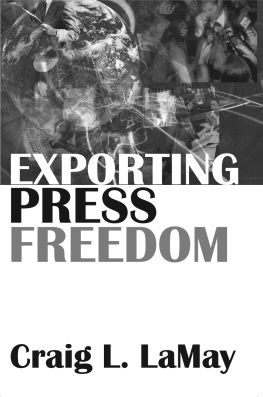
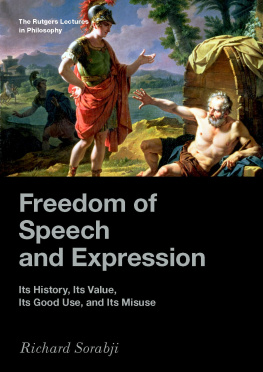
![Catalano - The great white hoax: the suppressed truth about the pharmaceutical industry [American freedom vs. medical power]](/uploads/posts/book/195943/thumbs/catalano-the-great-white-hoax-the-suppressed.jpg)
